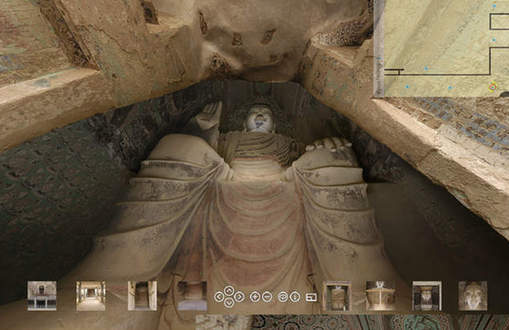Digital technology helps preserve Mogao Grottoes
 0 Comment(s)
0 Comment(s) Print
Print E-mail China Daily, July 23, 2016
E-mail China Daily, July 23, 2016
3-D printed Buddhist sculptures [Photo provided to China Daily]
This technology enables users to collect detailed information of the subject based on many points chosen during scanning, so that the detail of a curved surface or complicated structure and lines can also be captured.
It takes the scanner one to two hours to finish scanning a whole cave.
After scanning, processed digital information generates the cave's structure drawing and the outline of the statues directly. But the shape of eyes and noses on murals do no reproduce clearly, so archaeologists need to revise the drawing relying on high-definition photos.
"It's our first try," Cai says. "The new method cuts the work time by one third, and it's much more accurate."
At the moment a reproduction of Cave 320 of the Mogao Grottoes is on display at the Getty Center in Los Angles. The exhibition, which opened in May, will continue until September.
Ma Qiang, 53, director of the academy's fine art institute, is one of the artists taking part in the project. He spent four years creating facsimiles of the 6-sq m mural on the eastern wall of Cave 320.
Since 1981 when the 17-year-old Ma first arrived at Dunhuang Academy after failing the national college entrance examination, he has finished facsimiles of more than 30 pieces of murals in the Mogao Grottoes.






Go to Forum >>0 Comment(s)